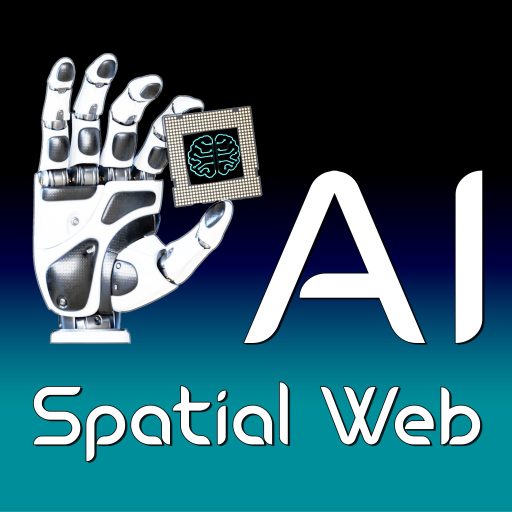
IEEE 2874–2025 Spatial Web Protocol Ratified - Ushering in
a New Era of Interoperable, Agentic Computing
- ByDenise Holt
- June 5, 2025
A Long-Awaited Milestone
On 29 May 2025, the IEEE Standards Board cast the final vote that transformed P2874 into the official IEEE 2874–2025 Spatial Web Standard.
Working-group chair George Percival celebrated the moment in the June 4th IEEE working group meeting as “monumental and historical,” noting that the standard’s 92% first-ballot approval and two subsequent re-circulations underscored its broad consensus support. The document now enters final copy-editing and is expected to be published in the next few weeks.
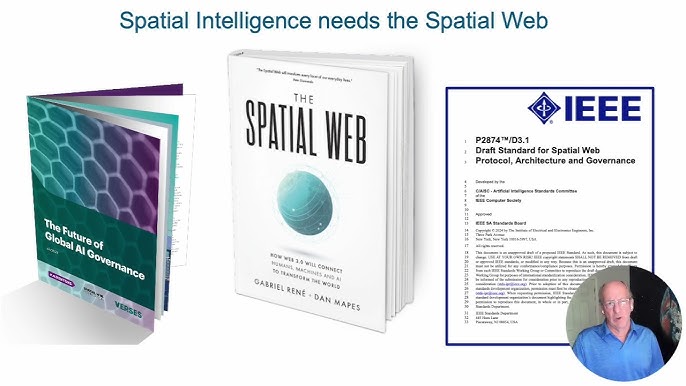
VERSES AI, co-sponsor of the effort, quickly applauded the ratification, framing it as “the next-generation connective tissue for AI systems, robots and IoT devices” in its June 4th press release.
In the IEEE working group meeting, Gabriel René, Founder & CEO, VERSES AI, congratulated everyone and stated:
“This approval is truly monumental and historic — it’s taken us all this time to get to the beginning, so now we can finally get started.”
For those who followed the July 2024’s working-group vote of approval last year, this final IEEE vote marks the formal hand-off from draft to enforceable global standard , completing the journey I have been chronicling from a first-person perspective as a member of the IEEE Spatial Web Protocol working group over the past three years. Last summer after the working group member vote of approval, I wrote an article for my Spatial Web AI blog titled, “The IEEE Approval of the Spatial Web Global Public Standards: A Technological Awakening for AI,” to commemorate the significance of that milestone.
What Changed on the Road to Final Approval?
- SWIDs & the Spatial Web Registration Authority (SWA).
Final legal and Registration Advisory-Committee reviews clarified that every Spatial Web entity must carry a Decentralized Identifier (DID) defined using the W3C did-core. This new Spatial Web Identifier is called a SWID. Governance of these identifiers now resides with a newly created SWA, provisionally operated by the Spatial Web Foundation.
- Ten-year lifecycle with amendment windows.
IEEE confirmed the standard’s 10-year validity and outlined a path for targeted amendments and future revisions as implementations mature.
- Expanded computing viewpoint.
A new SWID-registration use-case joins the previously defined HSTP scenarios, anchoring identity at the protocol layer.
These refinements tighten the spec while leaving room for community-led extensions.
A Global Coalition Behind the Protocol
More than 100 global organizations contributed to the development and approval of IEEE 2874–2025, representing a broad cross-section of industry, government, and academia from USA, Europe, Middle East, South America, New Zealand, and more. Members of the working group included major stakeholders such as Microsoft, NASA JPL, AWS, the Federal Reserve Board, Volvo, Astra Zeneca, Blockchain Chamber of Commerce, INATBA, EU Blockchain Observatory and Forum, CEA — the French Alternative Energies and Atomic Energy, GEO Roundtable, Ministry of Agriculture in Brazil, and dozens more from sectors including aerospace, finance, telecommunications, healthcare, and standards governance. Scores of researchers from major universities across the globe were also included.
This level of participation underscores the wide recognition that the next evolution of the internet must be rooted in interoperability, context-awareness, and trust across domains.
NASA JPL Turns HSML Into Code

During the June 4th meeting, Dr. Ed Chow unveiled NASA JPL’s pilot implementation:
- Schema-aware HSML API. A web interface converts arbitrary JSON, CAD files or documents into compliant HSML, automatically issuing SWIDs and keys for each agent or asset .
- Kafka-driven real-time exchange. JPL’s middleware moves HSML messages between Omniverse, Unity and Unreal digital-twin engines with ~11 ms latency — fast enough for rehearsing rover maneuvers or cooperative lunar logistics .
- Open-sourcing the tool-chain. Chow confirmed plans to release the API and reference network as open source in the coming months, enabling any organization to start building HSML-ready agents and twins .
The demonstration showcased rovers in separate simulation engines physically pushing one another, reinforcing the protocol’s promise of cross-platform physics, data and agent interoperability.
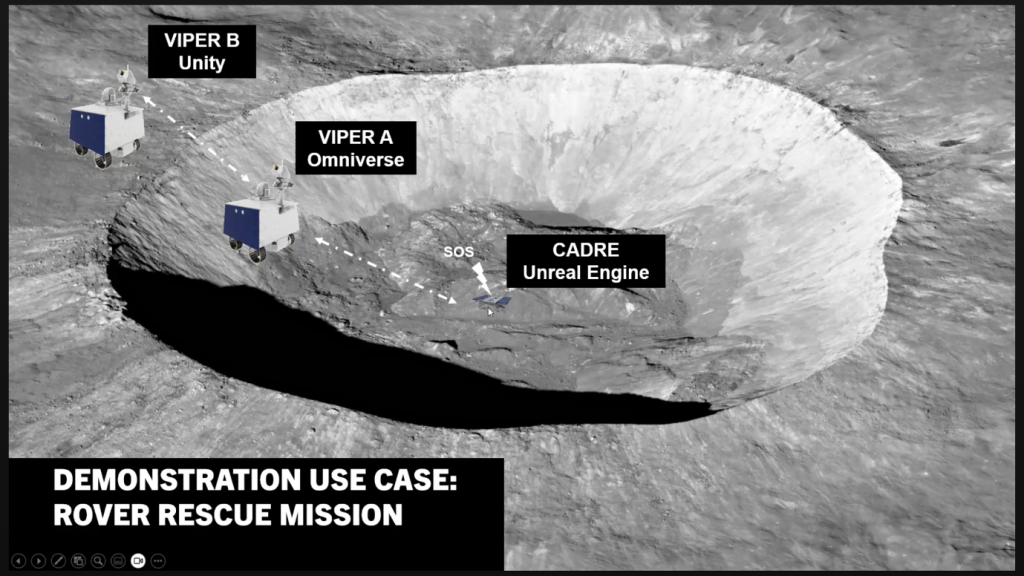
Why This Matters
- Interoperability by design. IEEE 2874–2025 unifies identifiers (SWIDs), data modeling (HSML) and messaging (HSTP) so that humans, machines and software agents share a single spatially-grounded graph.
- Edge-first, agentic AI. By distributing perception and planning across a Universal Domain Graph, the Spatial Web aligns with energy-efficient Active Inference approaches and reduces dependence on monolithic LLMs.
- Industry adoption signals. NASA’s lunar-digital-twin pilots illustrate how aerospace primes, municipalities and enterprises can federate simulations, assets and regulations without locking into one vendor stack.
- Governance baked in. SWIDs, credentials and contracts are native primitives, not afterthoughts — a prerequisite for safe autonomous commerce and regulatory compliance.
“The future of AI, especially to support global governance and ethics, requires this new set of sociotechnical standards so Autonomous Vehicles, global supply chains, healthcare, satellites, lunar exploration, etc. can all be interoperable, connected, secure, private and trustworthy.” — Michael Wadden, Chief Commercial Officer, VERSES AI and Managing Director, Spatial Web Foundation
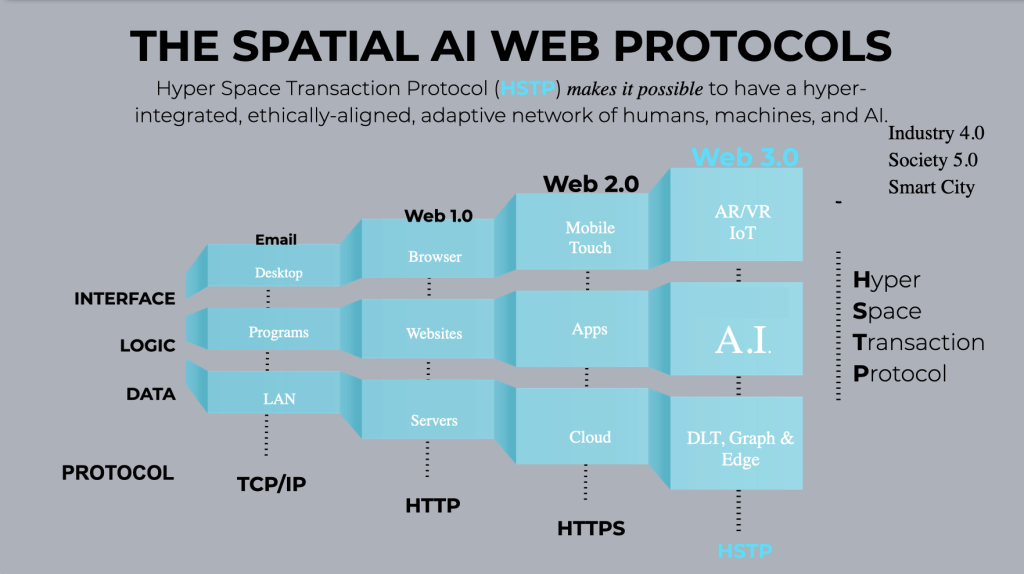
A New Layer in the Architecture of the Internet
IEEE 2874–2025 is the third foundational web protocol to be introduced since the internet’s inception. In the 1970s, TCP/IP created a packet-switching foundation that powered email and inter-networked computers globally. In the 1990s, HTTP and HTML enabled the World Wide Web of documents, search, and 2D web pages. Now, in 2025, HSTP and HSML — the Hyperspace Transaction Protocol and Hyperspace Modeling Language — open the door to a global 3D Web of Intelligence. This spatial layer will support the emergence of Smart Cities, context-aware applications, autonomous systems, and ultimately a Smart Digital Twin of the planet.
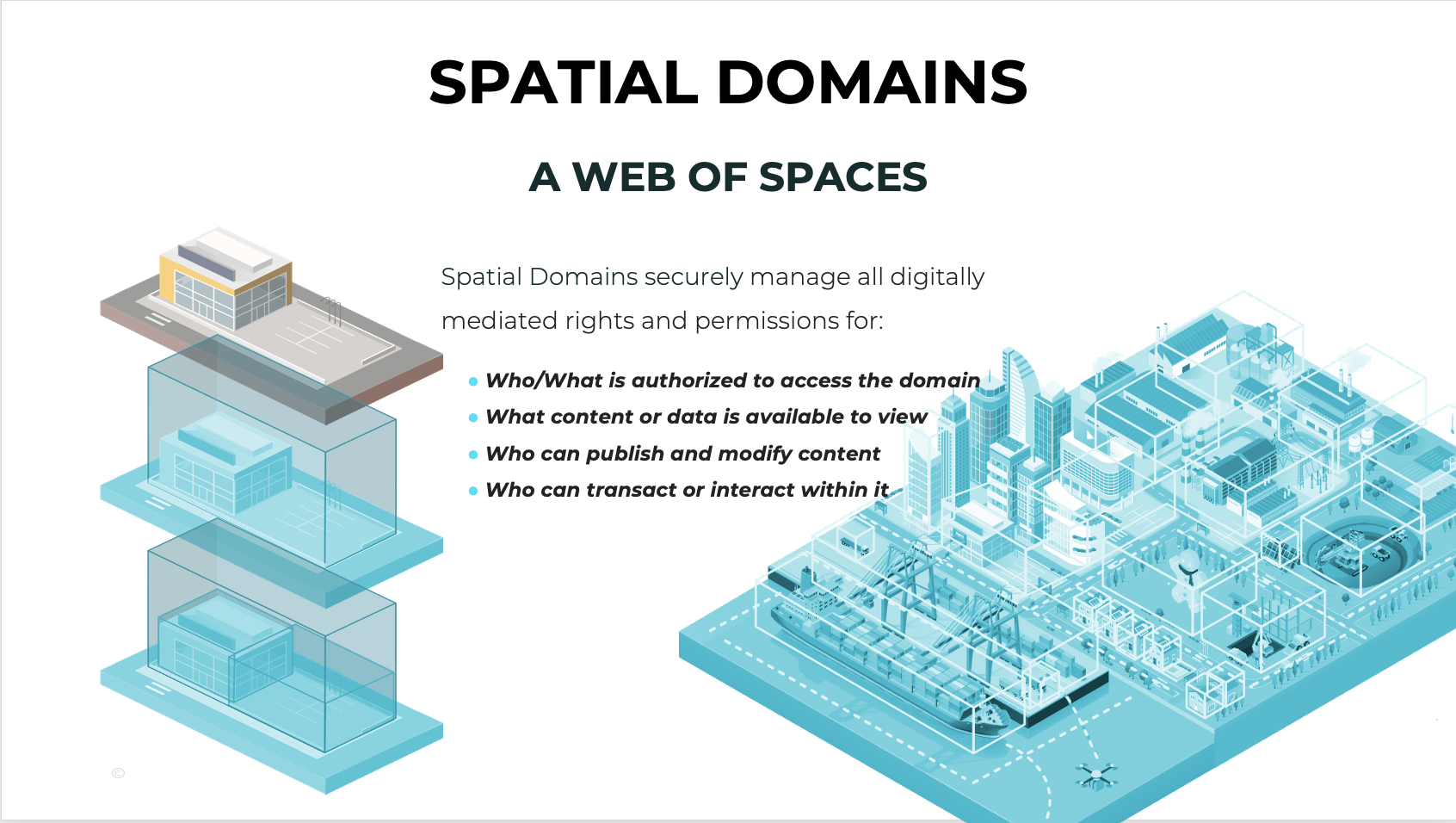
As digital twins of people, places, and things begin to interact seamlessly across simulations, devices, and real environments, the Spatial Web Protocol becomes the critical connective tissue of a real-time, semantically rich, intelligent global internet.
What Happens Next?

A Convergence of Intelligence and Infrastructure
The successful ratification of IEEE 2874–2025 is the culmination of a vision seeded in 2018 by Dan Mapes and Gabriel René, Founders of both VERSES AI and the Spatial Web Foundation. Their pioneering work laid the foundation for a decentralized architecture that unifies intelligent systems and Smart Technologies with internet-scale interoperability.
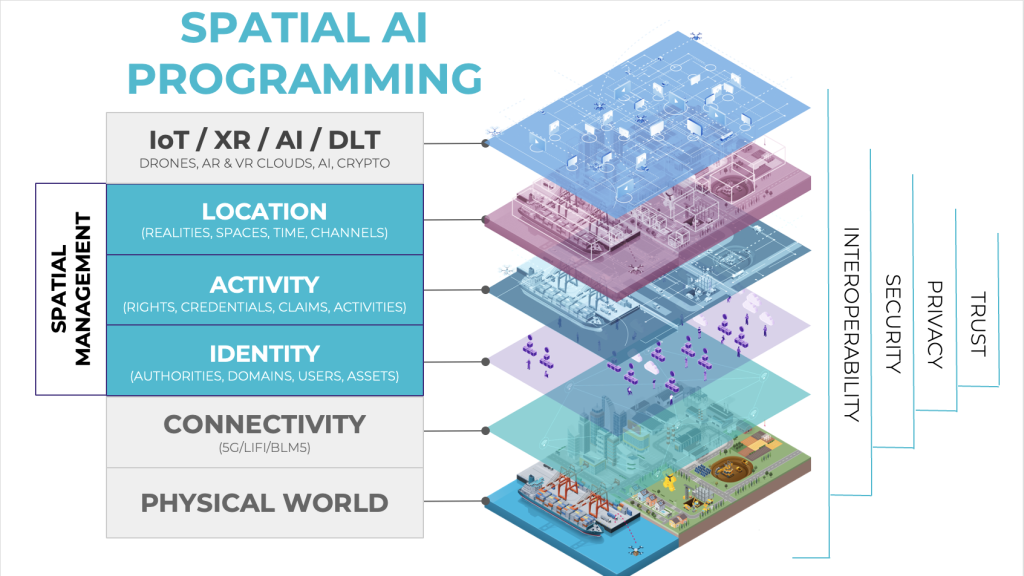
As VERSES continues to develop Active Inference AI, a form of autonomous intelligence inspired by neuroscience and the Free Energy Principle, while the Spatial Web Foundation advances global open standards, it becomes increasingly clear that neither the protocols nor the intelligence stand alone. Together, they are the building blocks of what world-renowned neuroscientist and VERSES’ Chief Scientist, Dr. Karl Friston has called “collective intelligence” described in the VERSES Whitepaper, Designing Ecosystems of Intelligence from First Principles, in 2022 as distributed, adaptive, and inherently safe systems that can scale across organizations, cities, and even planetary systems.
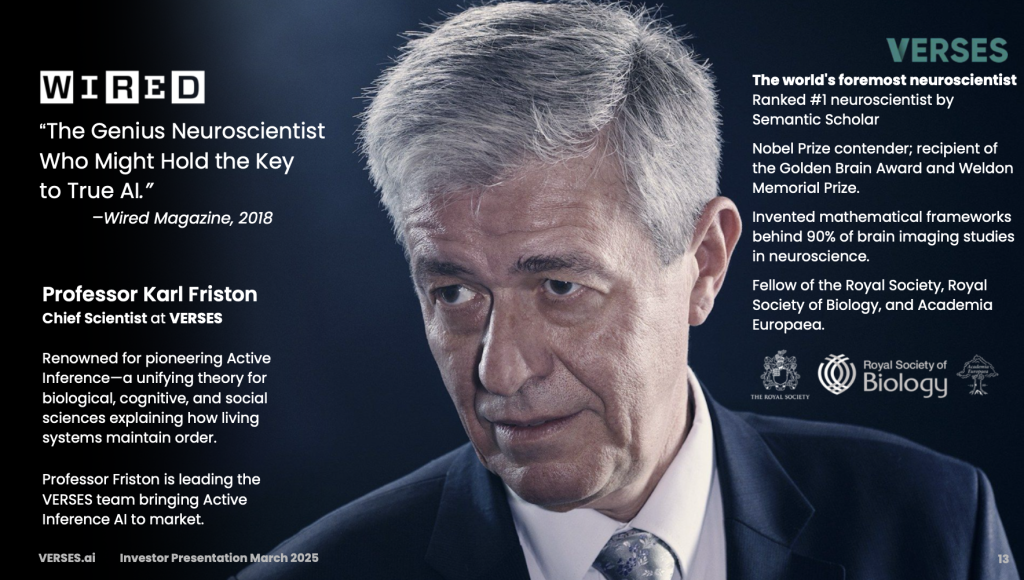
The VERSES research team has made monumental leaps since the publication of that paper. In the past year alone, some of their groundbreaking contributions have included:
- Designing explainable artificial intelligence with active inference: A framework for transparent introspection and decision-making (2023) — A formal framework for building inherently explainable AI systems using Active Inference, enabling agents to transparently introspect on their beliefs, actions, and outcomes through structured generative models
- Shared Protentions in Multi-Agent Active Inference (2023) — A formal framework for modeling collective foresight and predictive coordination among intelligent agents.
- From Pixels to Planning: Scale-Free Active Inference, introducing the concept of Renormalizing Generative Models (RGMs) (2024) — A scale-free, Active Inference-based model that learns and plans simultaneously, using less data and energy than deep learning.
- AXIOM: Learning to Play Games in Minutes with Expanding Object-Centric Models for Active Inference Optimization Machines (2025) — Introduces a novel Active Inference architecture that accelerates learning in low-data environments by embedding object-centric priors and modeling sparse object-object interactions. Unlike traditional Active Inference models designed for single domains, AXIOM (Active eXpanding Inference with Object-centric Models) generalizes across tasks by learning from individual events and refining its structure through Bayesian model growth and reduction. It achieves human-level data efficiency, mastering tasks within 10,000 interactions, while avoiding the high data demands and poor generalization typical of deep reinforcement learning.
These advancements signal that the Spatial Web is not only the next phase of the internet’s infrastructure — but also the native substrate for intelligent systems that can self-organize, adapt, and collaborate in real time, across domains and borders.
One of the most significant applications of the Spatial Web protocols will be the webbing together of all of the many layers of real-time information that a Smart City is producing moment by moment which will enable sustainable and optimal city management. Over time, it will enable a global web of smart cities sharing data with each other including supply chain information, transportation flows, climate data and other information flows that will ultimately create something we might call a Smart Planet.” — Dan Mapes, Founder & Director of Global Development, VERSES AI
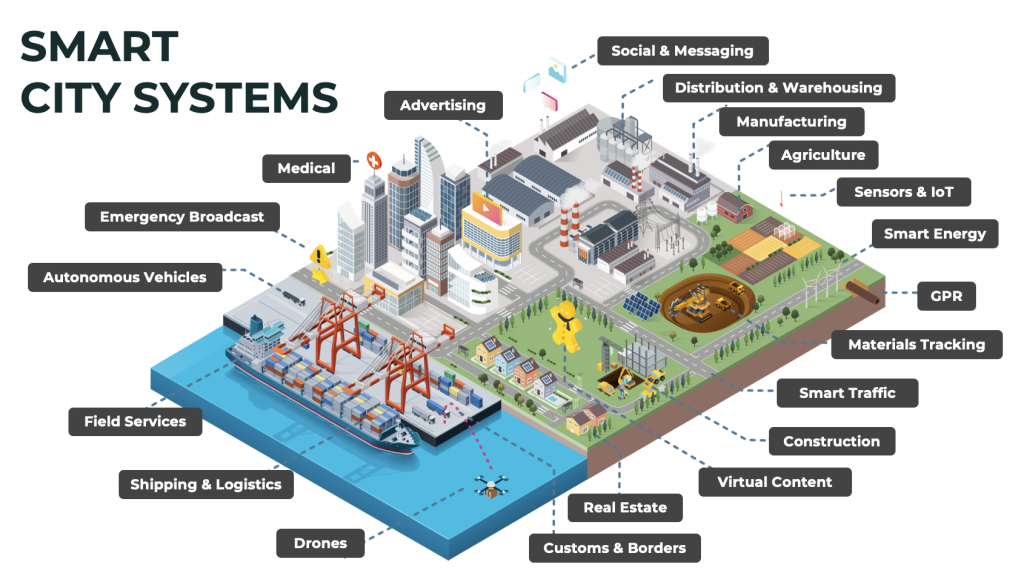
The Bottom Line
Ratification transforms the Spatial Web from visionary blueprint into enforceable, open, and actionable infrastructure. With the standard locked, an SWA in place, and NASA’s code on the way, the internet’s spatial phase shift is no longer theoretical — it is under construction.
Developers, enterprises and governments now have a clear, royalty-free path to build interoperable Intelligent Agents and digital twins that reason, learn and act across physical and virtual domains — and they won’t have to wait long to see it in action: VERSES’ Genius platform SDK was released on April 30th, and is slated to debut as the first commercial implementation of the newly ratified protocol.
In short, the Spatial Web is open for business.
Want to learn more? Join Learning Lab Central where you will find a series of courses, an advanced certification program, and an amazing education respository known as the Resource Locker — an exhaustive collection of resource papers, articles, video interviews, and more, all focused on Active Inference AI and Spatial Web Technologies.
The global education hub where our community thrives!
Scale the learning experience beyond content and cut out the noise in our hyper-focused engaging environment to innovate with others around the world.
Join the conversation every month for Learning Lab LIVE!




